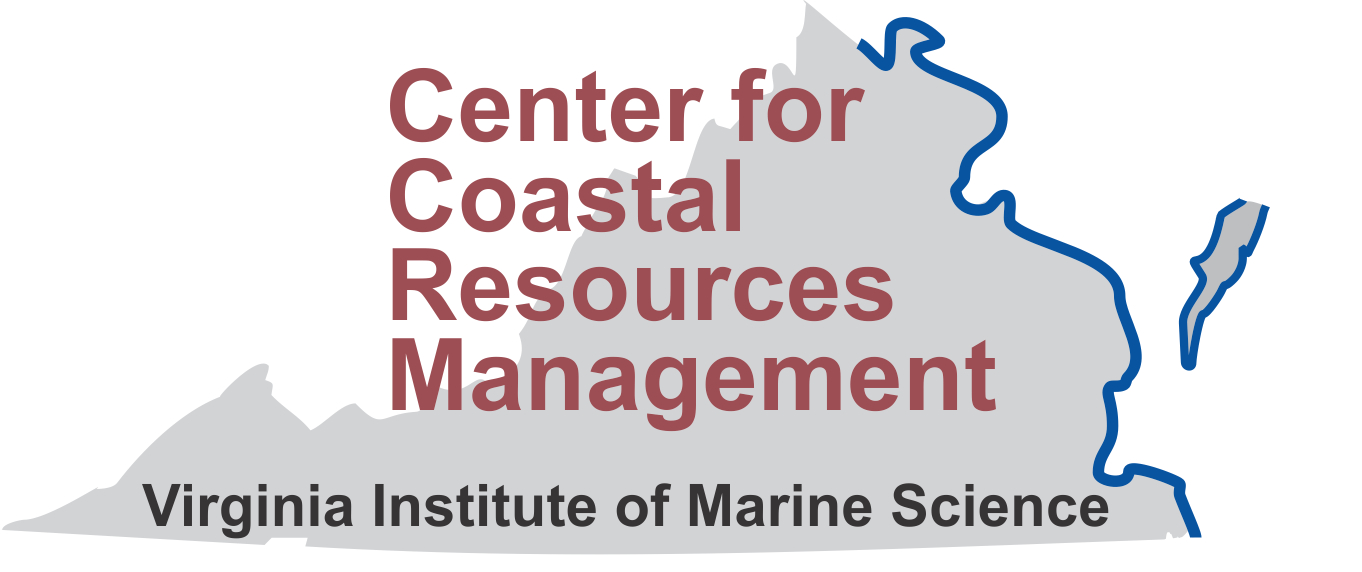The Virginia Wetlands Report was a periodic report published from 1986-2015. These reports contain short articles covering a variety of wetlands related topics including plants and animals, GIS, laws and policy, coastal erosion, and research.
-

The Virginia Wetlands Report Vol. 17, No. 1
Virginia Institute of Marine Science
- Spotted Sandpiper. Walter I. Priest, III
- Book Review Coastal Plants from Cape Cod to Cape Canaveral. David O’Brien
- Natural Resource Agencies Identify GIS Data Necessary to Address Agency Mandates. Marcia Berman
- Update on Virginia’s New and Improved Nontidal Wetlands Program. Ellen Gilinsky
- Studies Document Weaknesses in 404 Compensatory Mitigation. Tom Barnard
- Wetlands Yield Oriental Treats. Pam Mason
-

The Virginia Wetlands Report Vol. 17, No. 2
Virginia Institute of Marine Science
- Hellgrammites and Their Relatives. Rebecca Jo Thomas
- Book Review Wetlands Explained. Walter I. Priest, III
- GPS Technology Lends Support to the Marsh Project. Marcia Berman and Harry Berquist
- Phragmites australis (Reed Grass) Bane or Beneficence? Kirk Havens
- Impacts of Sea Level Rise Studied in Pamunkey River Marshes. Carl Hershner
- Worldwide Shrimp Farming and Mangrove Wetland Losses: Are the Two Irrevocably Linked? Pam Mason
-

The Virginia Wetlands Report Vol. 17, No. 3
Virginia Institute of Marine Science
- Red Drum, Sciaenops oscellatus. Walter I. Priest, III
- Marina Site Suitability Tool Available. Marcia Berman, Tamia Rudnicky, Kirk Havens and Thomas Barnard
- Virginia Wetlands Report Reader Survey Result. Tom Barnard
- Sphagnum Moss: Natural Properties Promote Historic Uses. Pam Mason
- Private Piers and Tidal Marsh Cumulative Impacts. Tom Barnard
-

The Virginia Wetlands Report Vol. 16, No. 1
Virginia Institute of Marine Science
- The Stinging Sea Nettle (Jellyfish). William L. Roberts
- The VIMS Teaching Marsh: A Tidal Wetland Restoration and Education Project. Karen Duhring
- An Overview of Permitted Tidal Wetland Impacts for 2000. Tom Barnard
- Wetlands Management Symposium Focuses on Technology and Conservation
-

The Virginia Wetlands Report Vol. 16, No. 2
Virginia Institute of Marine Science
- Northern Water Snake. William L. Roberts
- Book Review Discovering the Unknown Landscape: A History of America’s Wetlands. Tom Barnard
- Shoreline Situation Report Update. Marcia Berman
- A Summary of the EPA Rapid Bioassessment of Wetland Health Workshop.Rebecca Jo Thomas
- Through The Years in Virginia’s Wetlands: The 1970’s. Gene M. Silberhorn
- Atlantic White Cedar. Pam Mason
-

The Virginia Wetlands Report Vol. 16, No. 3
Virginia Institute of Marine Science
- Diamondback Terrapin. Walter I. Priest, III
- A GIS approach for Targeting Potential Wetlands Mitigation or Restoration Sites. Marcia Berman and Tamia Rudnicky
- Bay Managers Eye Recently Permitted SAV Losses. Lyle Varnell and Jay Woodward
- Through the Years in Virginia’s Wetlands: Days in the Field. Gene M. Silberhorn
-

The Virginia Wetlands Report Vol. 15, No. 1
Virginia Institute of Marine Science
- A Crawfish by any Other Name Would Taste as Sweet. Pam Mason
- Salt Marsh Snails. Walter I. Priest, III
- Book Review For the Health of the Land: Previous Unpublished Essays and Other Writings. Anne Newsom
- Computing Isolated Wetlands in the Commonwealth. Marcia Berman and Tamia Rudnicky
- Virginia Debates Nontidal Wetlands Regulation. Carl Hershner
-

The Virginia Wetlands Report Vol. 15, No. 2
Virginia Institute of Marine Science
- Grass Shrimp. Walter I. Priest, III
- Book Review Seashore Chronicles: Three Centuries of the Virginia Barrier Islands. Anne Newsom
- Grass Shrimp. Walter I. Priest, III
- A New Land Cover Data Set Now Available For Virginia’s Tributaries. Marcia Berman
- DEQ Implementing Nontidal Wetlands Protection Mandate. Ellen Gilinsky
- Sago Palm. Pam Mason
-

The Virginia Wetlands Report Vol. 15, No. 3
Virginia Institute of Marine Science
- Fiddler Crab. William L. Roberts
- CCI Develops New Online GIS Resources. Marcia Berman
- Increasing the Probability of Success in the Construction of Marshes in Coastal Virginia. Kirk J. Havens, Lyle M. Varnell,and Bryan D. Watts
- VIMS Shoreline Reports to Be Updated and Go Online.
-

The Virginia Wetlands Report Vol. 14, No. 1
Virginia Institute of Marine Science
- Horseshoes Anyone? Tom Barnard and Lyle Varnell
- Striped Mullet. Lyle Varnell
- Shoreline Situation Reports: Revised, Revisited, and Updated. Marcia Berman
- Wetlands
- Initiative Gains Momentum. Carl Hershner The Marsh Arabs of Southern Iraq. Pam Mason
- Compensatory Mitigation Issues: Is the planting of nonvegetated wetlands with wetland plants an acceptable form of mitigation? Kirk Havens
- What are benchmarks and why are they important in my permit application drawings? William Roberts
-

The Virginia Wetlands Report Vol. 14, No. 2
Virginia Institute of Marine Science
- Virginia Horseshoe Crab Management Update. Tom Barnard and Lyle Varnell
- Applications for Wetlands Restoration in the Elizabeth River Watershed. Marcia Berman
- Historic Wetland Loss in the Elizabeth River. Walter I. Priest, III
- Recorded History was Revolutionized By a Wetland Plant. Pam Mason
-

The Virginia Wetlands Report Vol. 14, No. 3
Virginia Institute of Marine Science
- Book Review Salt Tide: Cycles and Currents of Life Along the Coast. Anne Newsom
- Dragonflies: Hawks of the Insect World! Kirk Havens
- Corp of Engineers Maneuvering to Adjust James River Dredging Restrictions.Tom Barnard
- New Scholarship Housed at VIMS Online Fauna and Flora Data in Virginia. Marcia Berman
- Natural Lighting: Colonial Necessity is Today’s Craft. Pam Mason
-

The Virginia Wetlands Report Vol. 13, No. 1
Virginia Institute of Marine Science
- Northern Pintail. Julie G. Bradshaw
- Sheepshead Minnow. Lyle Varnell
- Classifying Satellite Imagery to Detect Land Cover Features. Marcia Berman
- Monitoring Wetlands Status and Trends: The Remote Sensing Solution. Carl Hershner
- Roof Thatching: Phragmites as a Building Material. Pam Mason
- Are nonvegetated, muddy shorelines valuable to the health of the Chesapeake Bay? William Roberts
-

The Virginia Wetlands Report Vol. 13, No. 2
Virginia Institute of Marine Science
- Wood Duck. Julie G. Bradshaw
- Striped Killifish. Lyle Varnell
- An Update on the Virginia Geographic Information Network. Marcia R. Berman
- Wild Rice. Pam Mason
- What is riprap? Is it preferred over a bulkhead for shoreline erosion control? William Roberts
- An Introduction to Stressed Habitats. James E. Perry, John E. Anderson, and Arnold F. Theisen
-

The Virginia Wetlands Report Vol. 13, No. 3
Virginia Institute of Marine Science
- Tundra Swan. Julie G. Bradshaw
- What kind of educational courses and publications does the Wetlands Program offer? William Roberts
- Mummichog. Lyle Varnell
- Using Remote Sensing and GIS To Perform Jurisdictional Wetlands Determinations. Marcia Berman
- United States v. Wilson: Muddy Waters in the Search for Wetlands Protection. S. Fagan and Jim Perry
- Responding to the Chesapeake Executive Council Directive for Wetlands Protection and Restoration Goals. Carl Hershner
- Wetlands: A Critical Resource in the Revolutionary War? Pam Mason
-

The Virginia Wetlands Report Vol. 12, No. 1
Virginia Institute of Marine Science
- Double-Crested Cormorant. Julie G. Bradshaw
- What is the Coastal Primary Sand Dune Protection Act? William Roberts
- Playing” Wetland Board is Excellent Learning Tool for Virginia Beach Students. Karla Schillinger
- Atlantic Silverside. Lyle Varnell
- GIS as an Educational Tool. Marcia Berman
- Medicinal Uses of Wetlands. Pam Mason
-

The Virginia Wetlands Report Vol. 12, No. 2
Virginia Institute of Marine Science
- Brown Pelican. Julie G. Bradshaw
- Spot. Lyle Varnell
- Fish Lesions, Pfiesteria and the Chesapeake Bay
- GIS as a Tool for Planning and Evaluating Wetland Mitigation Compensation Sites. Marcia Berman
- Wetlands Mitigation Banks: Creating Big Wetlands to Compensate for many Small Losses. Carl Hershner
- Wetlands Protection and Restoration Goals
- Peat: Use Through the Centuries. Pam Mason
- Does my erosion control structure affect my neighbor’s shoreline? William Roberts
-

The Virginia Wetlands Report Vol. 12, No. 3
Virginia Institute of Marine Science
- Barred Owl. Julie G. Bradshaw
- Yellow Perch. Lyle Varnell
- Targeting for Effective Wetlands Preservation. Marcia Berman and Lynn M. Dancy
- Chesapeake Bay Program Wetlands Initiative - New Approach Allows the Identification of Locally Important Wetlands. Carl Hershner
- Chesapeake Executive Council Directive
- Peat: Processing and Potential for Restoration. Pam Mason
- What is marsh toe protection and how does it protect a wetland? William Roberts
-

The Virginia Wetlands Report Vol. 11, No. 1
Virginia Institute of Marine Science
- Black Skimmer. Julie G. Bradshaw
- Alewife. Lyle Varnell
- Geographic Information System (GIS) Data Exchange- The State of the Problem. Marcia Berman
- Northern Neck Workshops Prove Profitable to Participants. Beth Peacock
- Grazing and Haying Activities in Wetlands. Pamela Mason
- Should I fertilize my tidal marsh? William Roberts
-

The Virginia Wetlands Report Vol. 11, No. 2
Virginia Institute of Marine Science
- Northern Harrier, or Marsh Hawk. Julie G. Bradshaw
- Bay Anchovy. Lyle Varnell
- Geographic Information System (GIS) Data Exchange- The State of the Problem, Part 2. Marcia Berman
- General Assembly Passes, and Governor Signs Wetlands Mitigation Banking Legislation.
- Second Edition of the Virginia Wetlands Management Handbook Now Available.
- Wetlands Management Symposium: Wetlands Compensation Survey Results
- Westmoreland State Park. Pam Mason
- Literally, what is littoral sand movement? William Roberts
-

The Virginia Wetlands Report Vol. 11, No. 3
Virginia Institute of Marine Science
- Great Blue Heron. Julie G. Bradshaw
- Weakfish. Lyle Varnell
- Geographic Information Systems Support Tributary Strategy Planning in Virginia. Marcia Berman
- Wetlands and Regional Watershed Management. Katie Hopkins
- Cranberries. Pam Mason
- What is a groin and how does it work? William Roberts
-

The Virginia Wetlands Report Vol. 10, No. 1
Virginia Institute of Marine Science
- Louisiana Waterthrush. Julie G. Bradshaw
- American Eel. Lyle Varnell
- Comprehensive Coastal Inventory Develops New Tidal Wetlands Inventories. Marcia Berman
- Earthwatchers Witness Change in the Chesapeake. Jill Barnard
- Corrotoman River Nature Trail. Pam Mason
- Monkey Bottom Wetland Walkway: A Walk on the Wild Side. Jill Barnard
- Gapped Breakwaters. Walter I. Priest, III
- Why is riprap preferred over bulkheads?
- How do marsh grasses act to stabilize shorelines?
-

The Virginia Wetlands Report Vol. 10, No. 2
Virginia Institute of Marine Science
- Prothonotary Warbler. Julie G. Bradshaw
- Spanish Mackerel. Lyle Varnell
- Sixth Annual Virginia GIS Conference. Marcia Berman
- Washington and Wetlands: Where Do Things Stand? Wetlands and People. Pam Mason
- VIMS and DEQ Water Division Complete Joint Study of Nontidal Wetland Scientific Advisory Needs. Lyle Varnell and Thomas Barnard
- What are nonvegetated wetlands and why are they valuable?
-

The Virginia Wetlands Report No. 94-2
Virginia Institute of Marine Science
- American Oystercatcher. Julie G. Bradshaw
- White Perch. Lyle Varnell
- Using Photography for Mapping. Marcia Berman
- Analysis of Functional Assessment Accuracy for Constructed Wetlands. M. Fox, Julie G. Bradshaw, and Jim Perry
- Habitat Restoration is Focus of Newly Formed Bay Program Workgroup. Carl Hershner
- Virginia Association of Wetlands Professionals.
- Dismal Swamp National Wildlife Refuge (Part 1). Pam Mason
- Bulkheading with Plastic.Walter I. Priest, III
-

The Virginia Wetlands Report No. 94-6
Virginia Institute of Marine Science
- Sea Ducks: Scoters and Oldsquaw. Julie G. Bradshaw
- Death on the Chesapeake Bay: The 1994 Avian Cholera Outbreak. Julie G. Bradshaw
- Wetlands Education Program Survey. Maryann Wohlgemuth
- Red Drum. Lyle Varnell
- Wetlands Management Symposium A Success. Tom Barnard
- Dismal Swamp National Wildlife Refuge (Part 2). Pam Mason
- Gabions. Walter I. Priest, III



